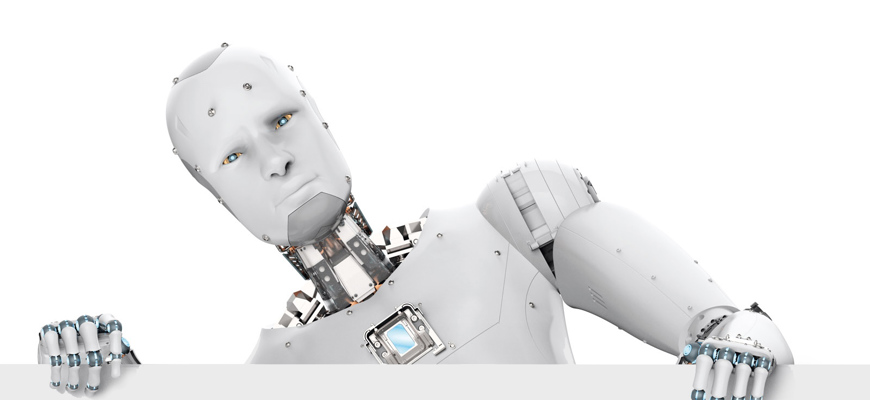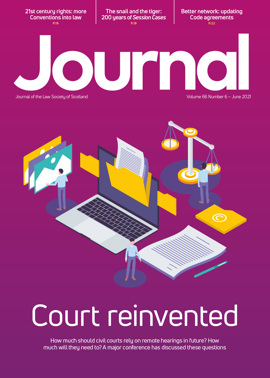Intellectual property: IP and artificial intelligence

Artificial Intelligence (AI) is widely recognised as having the potential to impact the future of every industry in the world. The ability for machines to simulate human intelligence is ever progressing and has reached a point where the law may need to adapt in order to accommodate its innovation. This article will analyse and evaluate the current legislative framework in light of the emergence of AI and will summarise the changes that may need to be implemented in order for intellectual property (IP) law to stay relevant.
What is AI?
AI is defined by the Oxford English Dictionary as “the theory and development of computer systems able to perform tasks normally requiring human intelligence”. In respect of acquiring intellectual property protection, therein lies both its triumph and defeat – namely, that although there are works created by AI, they are in effect “authorless”. The machines that create the works through AI may themselves be owned by legal persons, but the argument is that these systems work so independently and even creatively that the developer can no longer be classed as the author of the works created.
This leads to the questions that will be considered in what follows. Should patent law allow AI to be identified as the sole or joint inventor? To what extent does the current law and practice cause problems for patent and copyright protection for AI inventions in the UK? And, would a failure to amend IP law stifle innovation?
What does the current UK law say?
Current UK patent law (under the Patents Act 1977) requires that an “inventor” be a natural person (i.e. a human) for a patent application to be granted. This was confirmed by the High Court recently in Thaler v Comptroller-General of Patents, Designs and Trade Marks [2020] EWHC 2412 (Pat). Dr Stephen Thaler applied for patents in his own name but listed DABUS (the AI system he created) as the inventor. He argued that where inventions are derived from AI systems, the owner of those systems should be the default owner of any patents.
However, the High Court disagreed. It held that while it may be the case that machines are capable of being “inventors” per se, they are not capable of holding property rights and therefore are not capable of being listed as such on patent applications. The judge did suggest that Thaler himself could have been listed as the inventor, given that he owned the machine that did the inventing, but there is an argument that even if this were permitted, it would not reflect technological reality and this is what the law should accommodate. With an appeal outstanding, it remains to be seen how this case will be determined.
However, it is not only the inventor requirements under s 7 and s 13 of the 1977 Act that are causing debate. There are several exclusions on patentability and it has been argued that these make it difficult to obtain patent protection for AI-generated developments (“core AI invention”). In the response to submissions received on the Intellectual Property Office’s (“IPO”) call for views on artificial intelligence and intellectual property, it was noted how AI inventions are typically assessed as any other computer-implemented invention by the IPO. Under s 1 of the 1977 Act, “a scheme, rule or method for performing a mental act, playing a game or doing business, or a program for a computer” are all excluded from patent protection. Case law has confirmed that a computer-implemented invention can be patentable provided it makes a “contribution” to its relevant field, but nevertheless it remains a challenge for core AI inventions to meet the tests for patentability.
Turning to the issue of copyright, it has been argued that the current law on computer-generated works under the Copyright, Designs and Patents Act 1988 is unclear, particularly the requirement for originality. For a work to be original, it must not have been copied and must have resulted from sufficient skill, labour and judgment. However, case law has linked originality to human creativity, and AI creators have called for clarity.
What has the Government said?
In its response on the call for views for AI and IP, the IPO distinguished between the potential reforms to patent and copyright protection.
As regards patent protection, the IPO has recognised that although it may be possible for an AI system to devise an invention autonomously, it is nonetheless agreed that the AI itself should not own the intellectual property rights pertaining to that invention. Nevertheless, the IPO has acknowledged that patent protection is key to encouraging people to invest in AI research and therefore, in deciding who should own these rights, a number of possibilities have been suggested. However, what is clear is that the current inventorship criteria hinder patent protection for AI inventions and the IPO has pledged to consult on this point. Turning to the issue of patent exclusions, the IPO has agreed that patent application outcomes should be more predictable, and that there should be greater clarity surrounding patent exclusion practice. It has promised to publish enhanced guidelines on this point.
Unlike with patent protection, the IPO is less convinced that legislative reform is required for copyright protection. The majority of works generated by AI (the ones with human creative input) are already protected under s 9(3) of the 1988 Act as a “computer-generated” work. Where works are generated exclusively by AI, the majority of respondents to the IPO’s call for views felt that human creativity should be prioritised and that there should be no copyright protection at all. However, the IPO has promised to consult on this point. It has also agreed that the current approach to computer-generated works (as regards the requirement for originality) is unclear and should be reconsidered.
What could future reform look like?
Given that the IPO has admitted that current patent and copyright protection for AI generated work is far from perfect, it seems likely that change is imminent. Whether this is drastic legislative reform or something less radical remains to be seen. However, in the case of patent protection, among the possible options are: changing the inventorship requirements to include non-natural persons; allowing AI to be identified as a joint inventor; or extending the “made for hire” doctrine that applies to works created in the course of employment to AI generated works. In the case of copyright protection, the possible changes that have been tabled are: amending the requirements for computer-generated work; amending the definition of “author” to include AI; or creating a sui generis right for works created solely by AI (with no human creative input).
While these changes may appear unproblematic, each involves some level of legislative reform, which opens another can of worms: to what extent should there be consistency between the UK IPO and other international bodies such as the European Patent Office? Does amending one legislative framework whilst neglecting the others simply paper over the cracks and actually increase the burden on patent and copyright applications? The IPO will be responsible for balancing these questions against the importance of offering patent and copyright protection in order to encourage innovation within the field of AI.
Perspectives
Features
Briefings
- Criminal court: Doing justice with benefit fraud
- Corporate: Clarity is king – win some, lose some
- Agriculture: TFC provides holdings compliance guide
- Employment: Unintentional wrongs and injured feelings
- Sport: Where now for worker status?
- Intellectual property: IP and artificial intelligence
- Property: EWS1: another hurdle for the lawyer
- Scottish Solicitors' Discipline Tribunal
In practice
- Society's new office bearers step up
- AGM hears of a challenge met
- How do you manage the bank manager?
- Letters of engagement: one size does not fit all
- Climate change, inequality and the profession
- Fairness and justice: nice and simple does IT
- Profile: Craig Connal
- The Eternal Optimist: Difficult, or just different?
- Ask Ash: An anxious return







